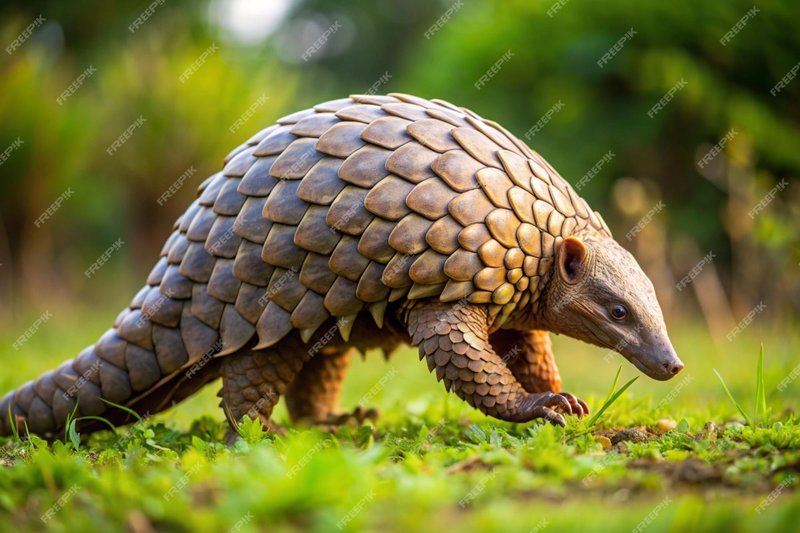
Pangolins are part of the anteater family, and like their distant relatives, they have some exceptional adaptations. They are known for their distinctive, armor-like scales and insect-eating habits. You might be wondering how these adorable armadillo-esque creatures use their brains to survive in the wild. Here’s the thing: their intelligence is not just about problem-solving but also how they interact with their environment and adapt to challenges. Buckle up as we explore their cognitive abilities and behaviors, and maybe even gain a new appreciation for these fascinating animals.
The Basics of Pangolin Intelligence
To understand how smart Indian pangolins are, we first need to look at what intelligence means in the animal kingdom. Typically, intelligence encompasses learning, problem-solving, and adapting to new situations. For pangolins, intelligence isn’t measured in the same way as it is for primates, but they display some clever behaviors that highlight their unique survival skills.
Pangolins primarily rely on their sense of smell to find food—mostly ants and termites. They can detect these critters underground using their powerful claws to dig them up. This ability indicates a form of intelligence, particularly when it comes to planning and executing tasks. Imagine knowing where the best snacks are hiding and having the skills to get to them!
Another fascinating aspect of pangolin intelligence is their escape tactics. When threatened, these creatures can quickly curl into a ball, hiding their vulnerable underbellies. This instinctive behavior not only protects them but also reflects an awareness of their surroundings and potential dangers.
Social Behaviors and Communication
Pangolins may not be the most social animals, but they do have ways of communicating with each other. Their social interactions are subtle but revealing. For instance, they often leave scent trails when they move around, which serves as a message to other pangolins about their whereabouts and reproductive status.
You might be surprised to learn that pangolins can also exhibit playful behavior, particularly when they’re young. Young pangolins have been observed engaging in playful activities that resemble social learning. This kind of behavior is crucial for developing survival skills, much like how human children learn through play.
Interestingly, their solitary nature means they often have to figure things out on their own, requiring them to rely on their instincts and problem-solving abilities. Whether it’s finding food or avoiding predators, their ability to navigate challenges showcases their cognitive strengths.
Problem-Solving Skills
When thinking about the intelligence of the Indian pangolin, it’s essential to consider their problem-solving skills. These creatures have to overcome various obstacles in their environment, whether it’s finding food, shelter, or avoiding predators.
One way they demonstrate this is through their digging abilities. Indian pangolins have strong, curved claws that allow them to dig deep into the ground to find hidden ants and termites. It’s not just brute force; there’s a level of strategy involved in choosing where to dig based on the scent of food in the area. This ability to assess a situation and react accordingly points to a form of intelligence that is often overlooked.
Imagine you’re playing a game that requires you to strategize and outsmart your opponents. That’s what it’s like for a pangolin when they’re navigating their environment. Each challenge they face necessitates careful thought and quick adaptation, revealing an impressive level of intelligence.
Memory and Navigation
Another crucial element of the Indian pangolin’s intelligence is its memory and navigation skills. These creatures often roam large areas to find food and mates, which means they must remember landmarks and routes. Their excellent spatial memory helps them navigate complex environments, much like how you might remember streets and landmarks in your neighborhood.
Scientists suggest that pangolins have a remarkable ability to memorize the locations of food sources, which is vital for their survival. They tend to return to specific sites where they’ve previously found food, indicating a strong recollection of their environment.
This spatial awareness is also essential for avoiding danger. By remembering where predators are likely to be and where safe hiding spots are, pangolins can better protect themselves. It’s a delicate balance of exploration and caution that reveals their intelligent behavior.
Adaptations to Changing Environments
As environments change, so do the challenges that pangolins face. Their ability to adapt is a significant indicator of their intelligence. The Indian pangolin’s diet may shift based on food availability, and they can learn new foraging techniques as needed.
For instance, if a particular colony of ants is depleted, a pangolin will not just keep searching the same area. Instead, it will explore different habitats or food sources, showcasing a flexible approach to survival. This adaptability is crucial, especially as habitats become threatened due to human activity.
Their intelligence shines through during these times of change. Rather than sticking rigidly to old habits, pangolins demonstrate a willingness to alter their behaviors, which is a sign of cognitive flexibility. This is essential for any species looking to thrive in a world that’s constantly evolving.
Conservation and the Future of Pangolins
Unfortunately, despite their fascinating intelligence and unique adaptations, Indian pangolins face significant threats. Habitat loss, poaching, and illegal wildlife trade have led to dramatic declines in their populations. This situation highlights why understanding and protecting these creatures is crucial.
Conservation efforts are underway to help protect pangolins and their habitats. Raising awareness about their intelligence and behaviors can foster a deeper appreciation for these animals. The more we know about pangolins, the better we can advocate for their protection.
Here’s the thing: by supporting conservation programs and spreading awareness, you’re contributing to the future of not just pangolins but countless other species that share their habitat. Each small action can lead to more substantial changes, helping us ensure that these remarkable creatures continue to thrive.
In summary, while Indian pangolins may not have the same level of intelligence as some more commonly celebrated animals, they still possess remarkable cognitive abilities. From problem-solving and memory to their adaptability in changing environments, these little creatures use their smarts to navigate the world around them.
As we continue to learn about the intelligence of the Indian pangolin and the challenges they face, we can appreciate their unique place in the ecosystem. So next time you hear about pangolins, remember the tiny knights in armor and the impressive brains behind their scaly exteriors. Understanding and protecting them is vital, not just for their survival but also for the health of our planet.

